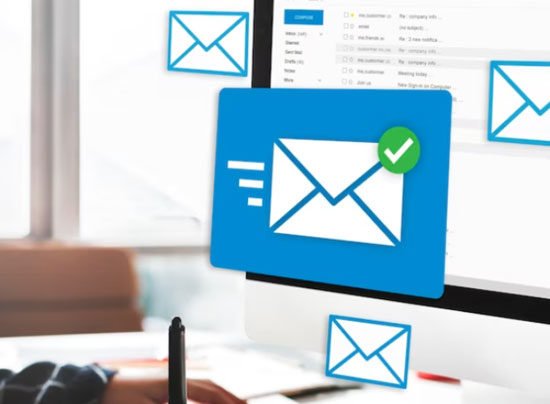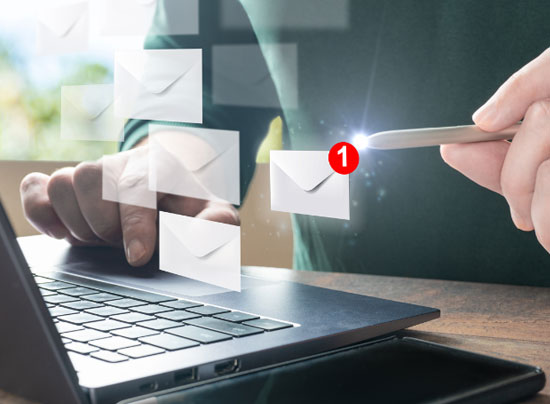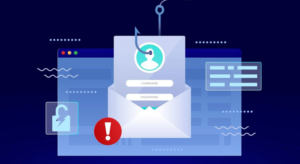In today’s digital age, effective email marketing can significantly impact the success of a business. But how do companies obtain a large database of email addresses to target potential customers? That’s where email scraping comes into play.
This article explores the top methods used for email scraping and provides insights into how to effectively scrape emails from websites.
Email scraping refers to the process of extracting email addresses from various sources like websites, social media platforms, and online directories. This technique allows businesses to build a valuable email list and reach out to their target audience.
Common Methods Used for Email Scraping

There are several methods employed for email scraping, each with its own advantages and potential risks. Let’s take a closer look at some of the most common methods:
Manual email scraping techniques

Manual email scraping involves manually searching for and collecting email addresses from websites. It requires time, effort, and attention to detail. Here are a few manual email scraping techniques:
Website search:
One of the simplest ways to find email addresses is by conducting a targeted search on a website. By using search operators and keywords, you can navigate through the pages and extract email addresses.
Contact pages:
Many websites have a dedicated contact page where they provide their email addresses for inquiries. By visiting these pages, you can collect the email addresses listed.
Social media profiles:
Some individuals and businesses include their email addresses in their social media profiles. By searching for relevant profiles and extracting the email addresses, you can add them to your email list.
While manual email scraping can be effective, it is time-consuming and may not yield a large number of email addresses. Additionally, it is important to respect privacy and comply with anti-spam laws when collecting email addresses.
Legal considerations and ethical practices for email scraping

When it comes to email scraping, it’s crucial to understand and abide by legal considerations and ethical practices. Here are some key factors to keep in mind:
Privacy policies:
Before scraping emails from a website, review its privacy policy to ensure you are not violating any terms. Some websites explicitly state that scraping is not permitted, while others may have specific guidelines.
Anti-spam laws:
When collecting email addresses, it’s essential to comply with anti-spam laws like the CAN-SPAM Act and the General Data Protection Regulation (GDPR). These laws dictate how businesses can send marketing emails and provide guidelines for obtaining consent.
Opt-in and unsubscribe options:
When using email scraping to build an email list, it’s important to provide opt-in options to users. This ensures that they willingly join your mailing list. Additionally, include an unsubscribe option in your emails to allow recipients to opt out if they no longer wish to receive your communications.
By adhering to legal and ethical practices, you can build a reputable email list and maintain a positive brand image.
Step-by-step guide on how to scrape emails from websites

If you’re looking to scrape emails from websites, follow these step-by-step guidelines to ensure a successful and efficient process:
Identify your target audience:
Before scraping emails, define your target audience. This will help you determine which websites to focus on and ensure that the email addresses you collect are relevant to your business.
Choose a scraping method:
Decide whether you want to use manual scraping techniques or automated tools. Consider the pros and cons of each method and choose the one that aligns with your goals.
Select websites to scrape:
Identify websites that are likely to have email addresses relevant to your target audience. This could include industry-specific websites, directories, or social media platforms.
Set up scraping tools:
If you opt for automated tools, set up the scraping tool of your choice. Enter the necessary parameters, such as the website URL or search criteria, to initiate the scraping process.
Extract email addresses:
Once the scraping tool is set up, initiate the extraction process. The tool will crawl through the website and extract email addresses based on the parameters you provided.
Clean and verify the email list: After scraping the emails, it’s important to clean and verify the list. Remove any duplicates, invalid email addresses, or spam traps to ensure the quality of your email list.
Respect privacy and legal guidelines:
Throughout the process, respect the privacy of the website owners and individuals whose email addresses you scrape. Comply with legal guidelines and ensure that you have obtained necessary permissions.
By following these steps, you can effectively scrape emails from websites and build a valuable email list for your email marketing campaigns.
Best practices for successful email scraping

To optimize your email scraping efforts and achieve the best results, consider implementing these best practices:
Focus on quality over quantity:
Rather than scraping a large number of email addresses indiscriminately, focus on collecting high-quality email addresses that are relevant to your business. This will increase the chances of engagement and conversions.
Regularly update your email list:
Email addresses can change or become inactive over time. It’s important to regularly update your email list to maintain its accuracy and relevance. Remove any email addresses that bounce or show no engagement.
Personalize your outreach:
When reaching out to individuals from your scraped email list, personalize your emails. Address recipients by their name and tailor your content to their interests or needs. Personalization can significantly improve engagement rates.
Test different subject lines and email content:
Experiment with different subject lines and email content to identify what resonates best with your audience. A/B testing can help you optimize your email campaigns and improve open and click-through rates.
Monitor email deliverability and engagement metrics:
Keep a close eye on your email deliverability rates and engagement metrics like open rates, click-through rates, and conversions. Analyze the data to identify areas for improvement and make necessary adjustments to your email marketing strategy.
By following these best practices, you can maximize the effectiveness of your email scraping efforts and achieve optimal results.
Tips for maintaining email scraping hygiene
Maintaining email scraping hygiene is essential to ensure the long-term success of your email marketing campaigns. Here are some tips to help you maintain a clean and efficient email scraping process:
Use reputable scraping tools:
Choose reputable scraping tools that prioritize privacy and compliance. Research the tools you intend to use and read reviews from other users to ensure their reliability.
Respect website terms of service:
Before scraping emails from a website, review its terms of service. Some websites explicitly prohibit scraping, and violating their terms can lead to legal consequences. If scraping is not allowed, explore alternative methods for obtaining email addresses.
Monitor changes in website structures:
Websites frequently update their structures, which can impact the effectiveness of your scraping efforts. Regularly monitor the websites you scrape and make necessary adjustments to your scraping techniques or tools.
Rotate IP addresses:
To avoid detection and potential IP blocking, consider rotating IP addresses when scraping emails. This can help prevent websites from identifying your scraping activities and taking measures to prevent them.
Maintain data security:
Safeguard the email addresses you scrape by implementing robust data security measures. Encrypt your data and store it securely to protect it from unauthorized access or breaches.
By implementing these tips, you can maintain a hygienic email scraping process and ensure the integrity and security of the email addresses you collect.
Conclusion: The future of email scraping and its impact on email marketing
In conclusion, email scraping is a valuable technique for businesses looking to build an email list and enhance their email marketing strategy. By understanding the common methods used for email scraping, the legal considerations and ethical practices involved, and the best practices for successful scraping, you can leverage this technique effectively.
As the digital landscape evolves, it’s important to adapt to changing regulations and privacy concerns. Email scraping should always be conducted responsibly, respecting privacy policies and complying with anti-spam laws. Additionally, exploring alternative methods for building email lists can provide a more sustainable and engaged subscriber base.
By employing the right email scraping methods and following legal and ethical practices, you can unlock the power of email marketing and connect with your target audience in a meaningful way.






